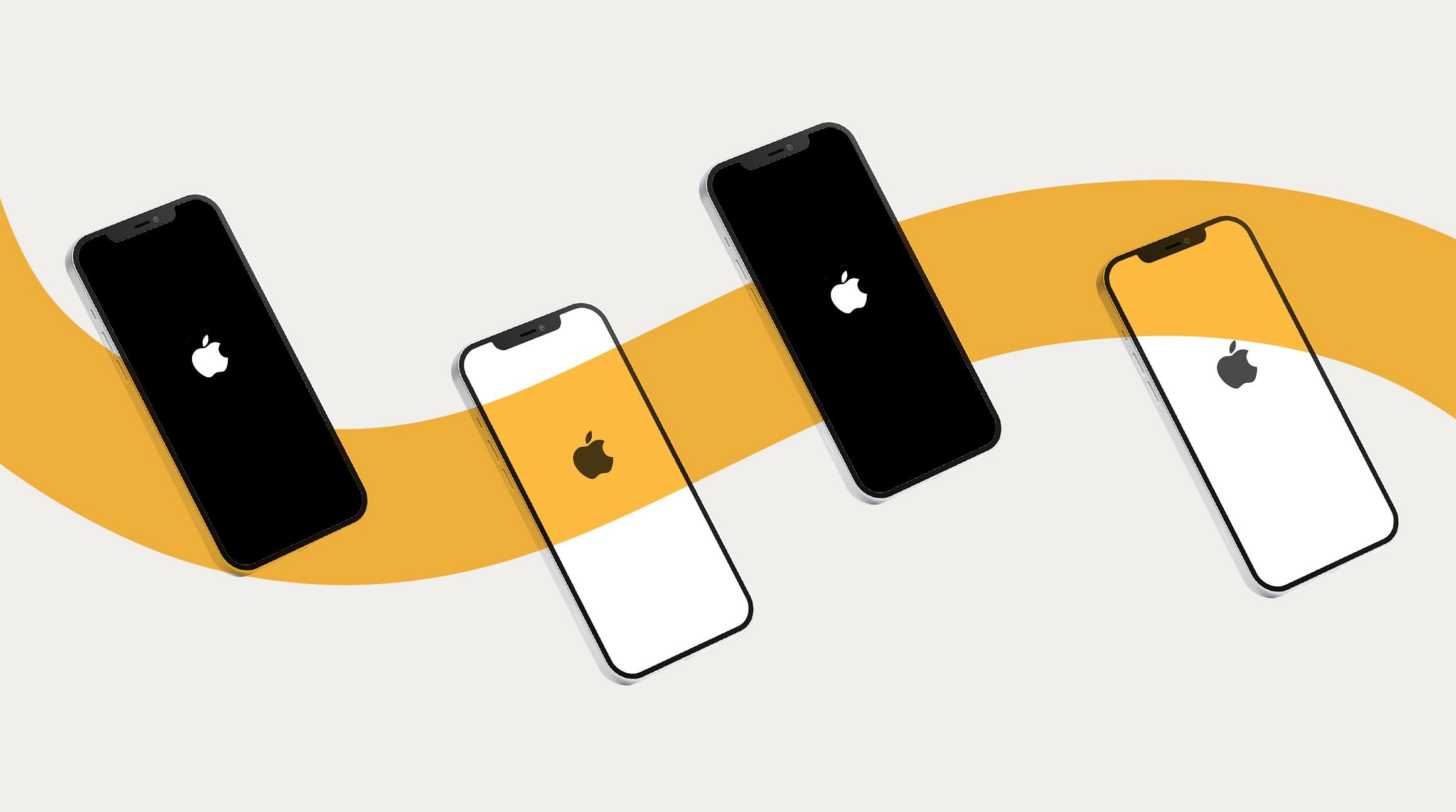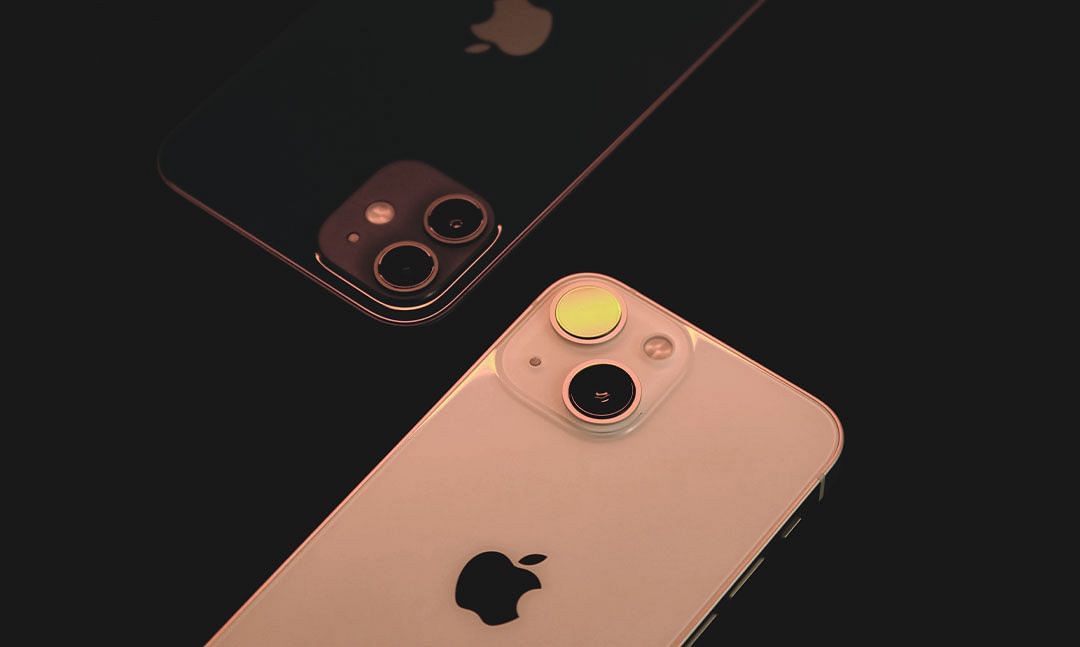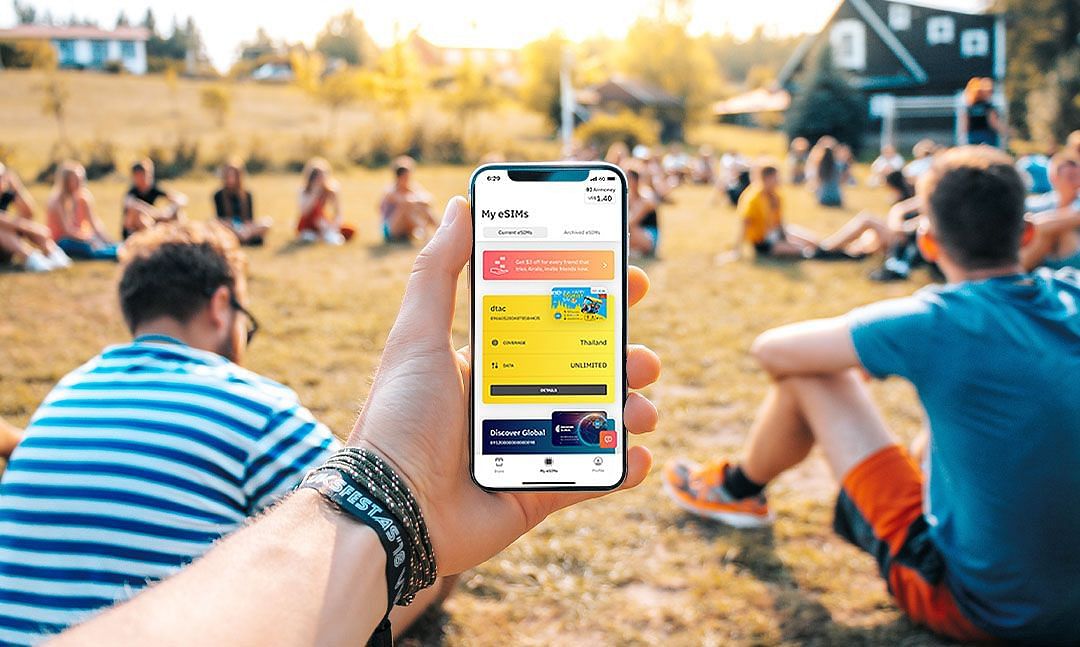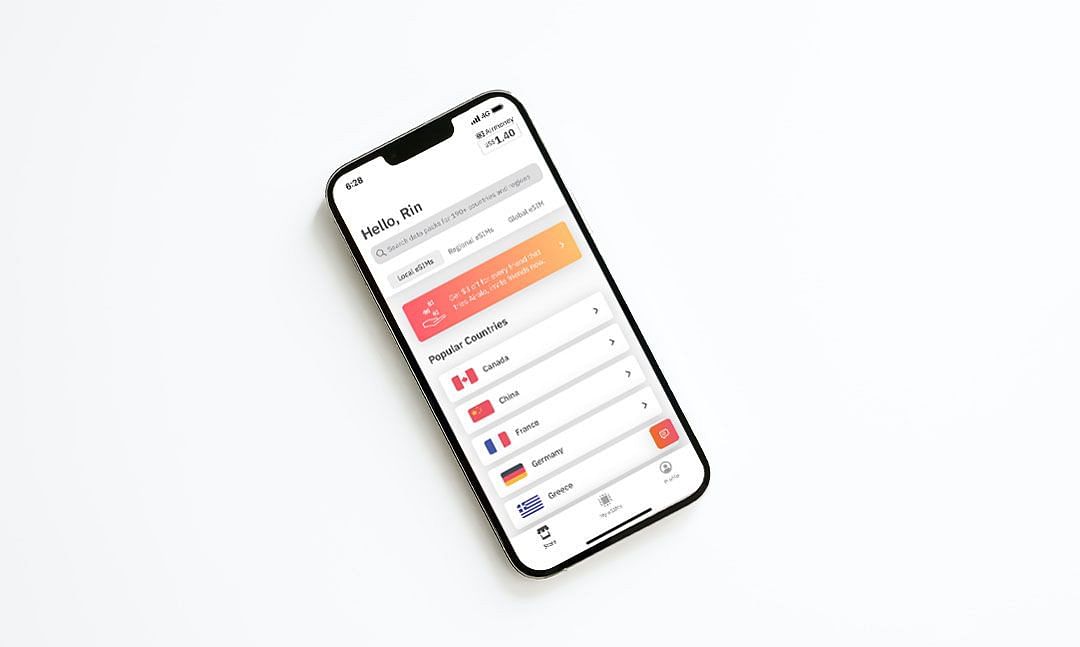
In September 2021, Apple introduced four models of the iPhone 13: the iPhone 13 Mini, the iPhone 13, the iPhone 13 Pro, and the iPhone 13 Pro Max.
Since then, numerous iPhone releases have occurred, but the iPhone 13 series remains a solid option with many great features. The iPhone 13 models were also the first to feature Dual eSIM support, enabling users to store multiple eSIM profiles on their devices and paving the way for further innovation.
In this article, we'll cover the following:
- iPhone 13 Features
- eSIM technology on iPhone 13
- The difference between Dual SIM vs. SIM vs. eSIM on iPhone 13
- Using an Airalo eSIM on iPhone 13

iPhone 13 Features
The iPhone 13 runs on iOS 15 and the A15 Bionic processor, making it smoother and slightly faster than the iPhone 12. The camera quality is also improved compared to previous models. iPhone 13 models have cinematic mode, 4K video, and more dynamic filters. These are also the first models to feature Dual eSIM support, enabling users to store multiple eSIM profiles on a single device.
Note: iPhone devices from Mainland China (and some in Hong Kong/Macao) do not have eSIM capability.
Compared to older iPhone models, the iPhone 13's overall hardware, software, and camera performance make it a device worth having. It's also more affordable than newer models, like the iPhone 17, making it a great option for those looking to save while still enjoying an iPhone with good performance.
If you're upgrading from the iPhone 12, the performance upgrade won't be noticeable. But users upgrading from an older device will notice the following improvements:
- Better Wi-Fi and 5G data connectivity (depending on your provider)
- Ability to use two eSIMs simultaneously
- Longer battery life

eSIM Technology on iPhone 13
Apple has made it a top priority for eSIMs to be the standard. An eSIM is an embedded SIM card — a tiny chip built into your device that connects you to a mobile network. Rather than swap SIM cards, you can download a data plan directly to your device and activate it to get online. Pretty simple, right?
eSIMs allow you to do the following:
- Use your mobile network for local data.
- Use your cellular service for calls and texts and to connect to other phones and devices.
- Screen, scan, store, search, activate, and download data to your device.
- Keep your number while still being able to switch your phone line.
- Download and pay for a plan that makes sense for your data needs.
- Never have to worry about being hit with roaming charges.
- Digitally install and activate an eSIM plan (no swapping SIM cards).
Pro Tip: Use the Airalo app to switch to a local, regional, or global plan. You can also top up your data if you run low.
Apple is a prime example of a manufacturer that wants to make your life easier. Apple was the first to remove the headphone jack and replace it with wireless AirPods. It did the same with the phone interface by adding soft touch buttons to make it a more digital experience.
With Dual eSIM support, you can use two phone numbers, store multiple eSIMs, and easily switch phone lines. Eventually, the SIM card slot will be redundant, and using a physical SIM will be a thing of the past.

Difference Between Dual SIM vs. SIM vs. eSIM on iPhone 13
Dual SIM
Dual SIM allows you to store more than one SIM card and/or eSIM on your device. You designate one of your SIMs/eSIMs as your primary line and put the other on standby mode.
Let's say your primary plan is with an American provider and secondary with a Canadian. When you use Dual SIM, you can toggle the lines on and off depending on your location. And with Dual eSIM support, you don't need to worry about managing multiple SIM cards — you can go 100% digital.
SIM Card
SIM stands for "Subscriber Identity Module." A SIM card is a memory chip that stores information about you as a mobile customer and gives you access to a carrier's network. This tiny piece of plastic identifies your phone number, what cellular data/service you can access, and what cellular data/service you are restricted from using. Today, most SIM cards are nano SIMs.
eSIM
eSIM stands for "embedded SIM card." It's a memory chip that's built into your device's hardware and can't be removed. An eSIM works 100% digitally: You download a plan, install it onto your device, and activate it to connect to a mobile network.
Suppose you're traveling to France from Canada. You can purchase an eSIM before you leave and connect to a local network within minutes of landing. There's no need to find a SIM vendor, swap out your physical SIM, or manage multiple SIM cards.

Using an Airalo eSIM on iPhone 13
If you have an iPhone 13, now's the perfect time to try an Airalo eSIM. To get started, you'll need to download an eSIM plan from Airalo:
- Ensure your phone is carrier-unlocked.
- Go to the Airalo website or download the Airalo app.
- Select an eSIM plan (we have eSIMs for 200+ destinations).
Once you've purchased an eSIM, you'll receive detailed installation instructions. You can install an eSIM directly, manually, or with a QR code (remember that some eSIMs may not allow direct installation).
- Direct: Follow the prompts from the Airalo app (this is the fastest).
- QR Code: Scan a QR code to install the eSIM.
- Manual: Enter the eSIM information into your device settings.
Depending on the eSIMs activation policy, your eSIM will activate immediately upon installation or when you connect to a mobile network at your destination. Here's how to turn on your eSIM line:
- Go to your device's Settings
- Select Cellular/Mobile Data
- Turn On your eSIM line
Ready to go? Head to the Airalo store or download the Airalo app to purchase an eSIM for your iPhone.
FAQ
When did the iPhone 13 come out?
The iPhone 13 came out in September 2021. Apple introduced the iPhone 13 with four models: the iPhone 13 Mini, the iPhone 13, the iPhone 13 Pro, and the iPhone 13 Pro Max.
Does the iPhone 13 have a SIM card?
The iPhone 13 generally has both an eSIM and a physical nano-SIM card. However, in models sold in Mainland China (and some in Hong Kong/Macao), there is no eSIM capability.
Does the iPhone 13 have an eSIM?
Yes, the iPhone 13 generally has eSIM capabilities. Devices sold in Mainland China (and some in Hong Kong/Macao) are exceptions.



